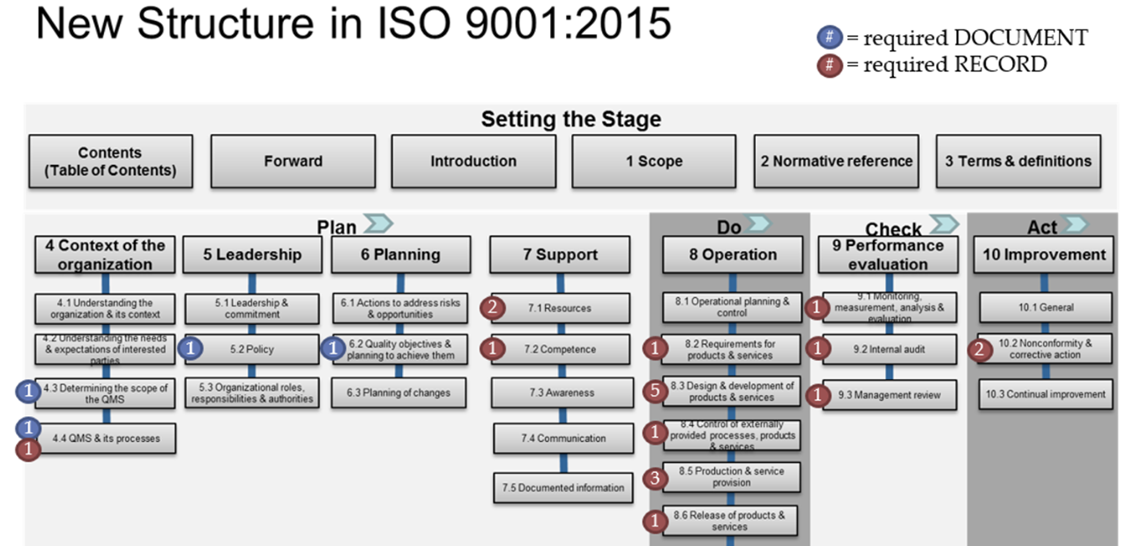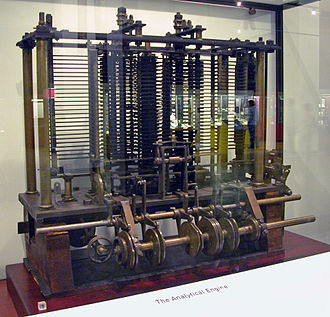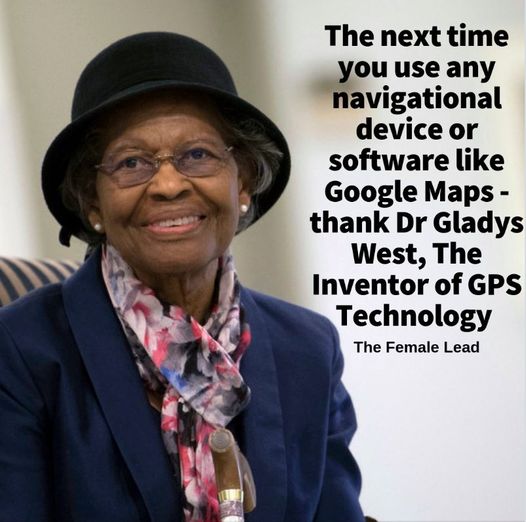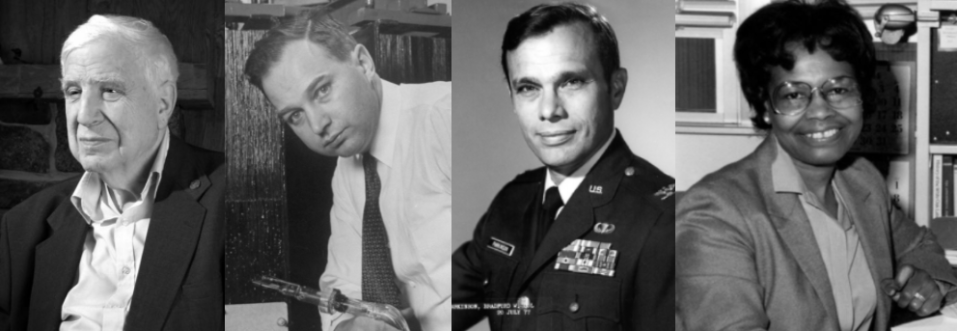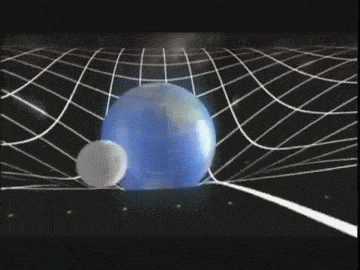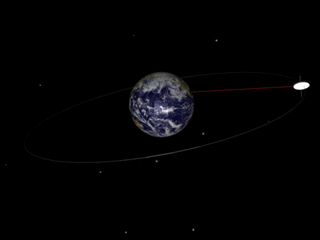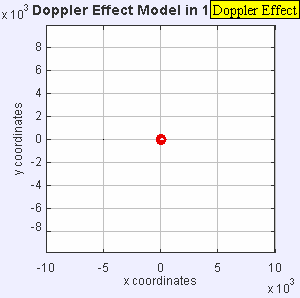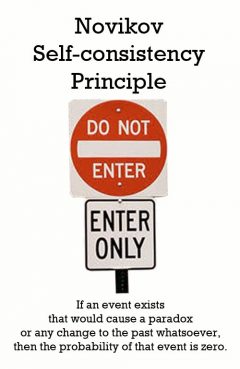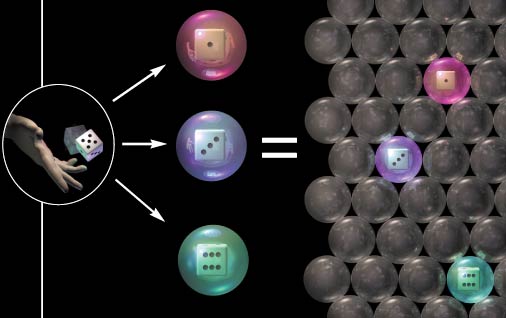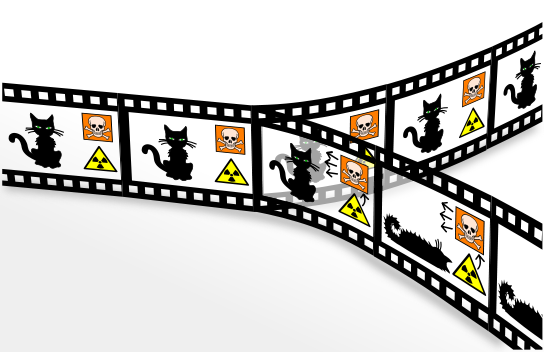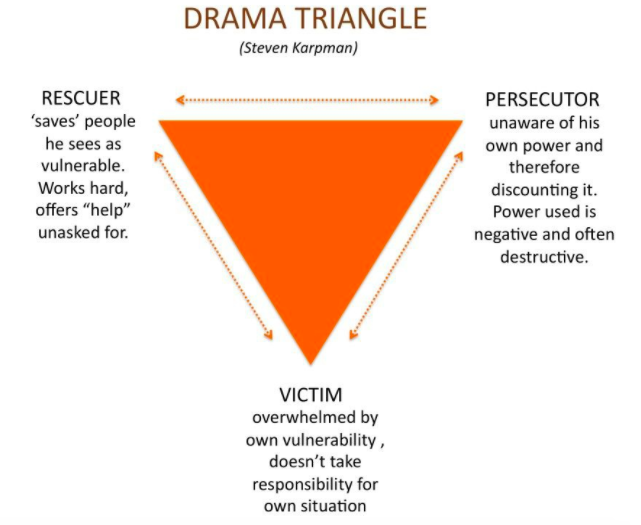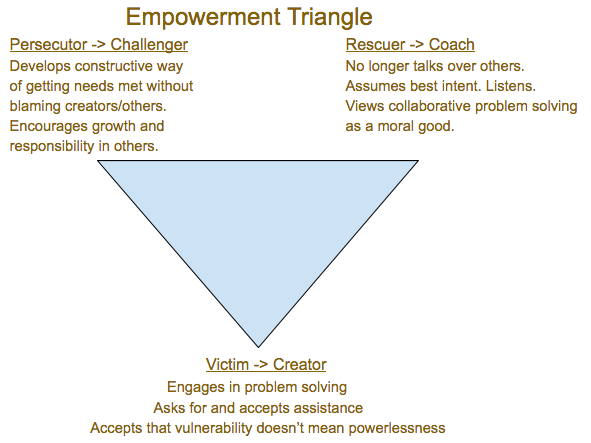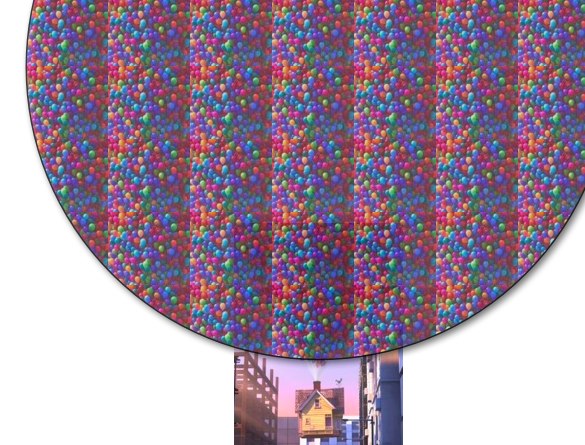Home » Posts tagged 'Problem solving'
Tag Archives: Problem solving
How can we use the ISO process to help improve schools?
Many companies use ISO processes to systematically look at and improve their company. School districts and individual schools can benefit from the same ISO process. You can learn more about ISO here. This flowchart shows the structure of ISO 9001, and below we show it can be used in schools
Context of the organization
For a business – how is it organized? What is their QMS (quality management system?)
For a school – how is the school system organized? It usually looks something like this:
City or town school committee -> Superintendent -> School district teams and Principals -> Each individual school teacher and staff structure.
What kind of QMS do we find in schools?
Each school collects data on grades, attendance, safety, college or trade school or career acceptance, etc. They send this data to the appropriate district teams for discussion and analysis. This information should be made available to the school committee and general public.
Leadership
For a business, what are the leadership levels? They often look like:
President -> Vice president -> Department managers -> Employees within each department.
For a school, what are the leadership levels?
Principal -> assistant principals or deans ->teachers and paraprofessionals -> Students
Planning
For a business, what are the objectives and how does it achieve the objectives?
For a school, what are the objectives and how does it achieve the objectives? They may include:
* Promote a safe environment both for teachers and students
* Promote college and/or career readiness
* Develop young women and men into confident, self-directed, lifelong learners
* Develop young women and men to become productive members of their community
Support
For businesses – Resources, awareness, communication, documented information.
For schools –
Resources: Most classes have rooms with sufficient chairs and desks, bookshelves, supplies, manipulatives, lab equipment, textbooks (whether physical or digital;) computers/Chromebooks; school library, etc. Similarly, we can define what resources should be available for music, art, physical education, vocational education, special education, English Language Learners education, etc.
Awareness – There should be a structure for both teachers and students to have their concerns and needs heard by the administration.
Communication – Teachers communicate in regular department meetings and through email. The school has meetings for department heads for cross-curricular issues. There are whole-school meetings for all faculty/staff.
Documented information – This includes, but is not limited to, textbooks, teacher texts, worksheets, sample essays, quizzes, exams, labs, etc. (physical or digital,) and the district’s official learning standards (which may be local, state, national, or a combination thereof.)
Operations
For a business, we clearly define the production and delivery of products/services.
For a school we clearly define the creation/revision of pacing guides and lesson plans; and the implantation of these in the classroom, music room, art room, gym, etc.
Performance evaluation
For businesses: Is the product being made correctly? Monitoring, measurement, analysis, evaluation, internal audit. Management review.
For schools – Informal discussions, and asking questions, with students throughout the day. School quizzes and tests. State or national mandated standardized exams.
Improvement
For businesses – Identify any nonconformities and then decide what corrective actions would be helpful. A goal is continual improvement.
For schools – The parallel to nonconformities in schools could include –
– a student demonstrating that they didn’t (yet) learn certain facts; haven’t (yet) understood how individual facts were related in a greater whole; or haven’t (yet) mastered certain skills.
– a teacher demonstrating that they didn’t (yet) master how to create/revise pacing guides and lesson plans, or (yet) fully implement classroom management skills.
– an administrator demonstrating that they didn’t (yet) master how to help new or struggling teachers, how to help teachers who may feel targeted by students or parents, how to help students who have learning problems, how to help teachers or students who may be experiencing discrimination, etc.
and then decide what corrective actions would be helpful. The goal is continual improvement.
Mathematics in science fiction
Mathematics in science fiction
The three leading Mathematicians in contemporary American Science Fiction are:
-
- Professor Vernor Vinge – recently retired from teaching Mathematics in a major San Diego, California, university so as to write full-time;
-
- Professor Rudy Rucker – Ph.D. in Mathematical Logic; taught at San Jose State University, in the heart of Silicon Valley;
-
- Professor Jonathan Vos Post : also known as Your Humble Webmaster, in the 2nd semester as part-time professor of mathematics at Woodbury University, in Burbank, California; with a B.S. in Mathematical Logic from Caltech, and 4 Mathematics papers written in the first 4 weeks of 2004 and submitted to journals and international conferences.
There is plenty of Fantasy and Science Fiction about Mathematics, including:
-
- “Socrates and the Slave”, by Plato [date?] : Reprinted in Fantasia Mathematica;
-
- “The Tachypomp”, by Edward Page Mitchell [18xx] : Originally published in a New York newspaper; arguably the first story ever about computer-enhanced human intelligence; idiot has what we would call a computer implanted in his skull, making him a genius; likely influenced the classic “Flowers for Algernon” and the botched film “Lawnmower Man”; Reprinted in Fantasia Mathematica;
-
- “The Plattner Story”, by H.G. Wells [1896] : 4-D rotation makes 3-D object mirror-reversed;
-
- “Peter Learns Arithmetic”, by H.G. Wells [18xx]: Reprinted in Fantasia Mathematica;
-
- “Young Archimedes”, by Aldous Huxley [1924]: Peasant prodigy discovered by couple vacationing in Italy; explicitly shows boy rediscovery of a theorem of Pythagoras; warning: tragic ending. Reprinted in Fantasia Mathematica;
-
- “The Captured Cross-Section”, by Miles J. Breuer, M.D. [1929] : A multi-dimesnional geometry fiction, where the Mathematician hero has to save his mathematician finacee; starts with some Linear Algebra, and quickly moves to a 4-D creature manifesting in our 3-D world; Reprinted in Fantasia Mathematica; has a sort of sequel by Greg Bear {to be done};
-
- “The Death of Archimedes”, by Karel Capek [19xx] : Historically, we think that Archimedes was killed by an ignorant Roman soldier. In this tale, the soldier knew very well who Archimedes was, and the murder stems from the great Mathematician refusing to work for the Roman Army, after some fascinating discussion about the use of Mathematics in military science. Karl Capek wrote the famous Science Fiction play “R.U.R.” which introduced the word “robot”, and the SF novel “War with the Newts.” Reprinted in Fantasia Mathematica;
-
- “Jurgen Proves it by Mathematics”, by James Branch Cabell [19xx] : Reprinted in Fantasia Mathematica;
-
- “A. Botts and the Mobius Strip”, by William Hazlett Upson [19xx] : Reprinted in Fantasia Mathematica;
-
- “God and the Machine”, by Nigel Balchin [19xx] : Reprinted in Fantasia Mathematica;
-
- “Misfit”, by by Robert A. Heinlein [1939] : math prodigy Libby;
-
- “And He Built a Crooked House–“, by Robert A. Heinlein [1940] : tesseract-projected-into-3D house folds into 4-D in California quake, with occupant inside; considered one of the most cited Mathematics story in modern fiction;
-
- “Inflexible Logic”, by Russell Maloney [1940] : Old theory that enough monkeys typing on enough typewriters would eventually type all the books in the British Museum. In this story, six chimpanzees are put at six typewriters, and start typing flawlessly. The Mathematician has to decide whether or not to intervene, to save the Laws of probability. Reprinted in Fantasia Mathematica;
-
- “No-sided Professor”, by Martin Gardner [1946] : First published in Esquire. A Mobius strip is a strip of paper with a half-twist, that has only one side. Is there a way to keep going and get no sides? And what if you could fold a person that way? Reprinted in Fantasia Mathematica; reprinted in Mathenauts; has a sequel “The Island of Five Colors”;
-
- “Wall of Darkness”, by Arthur C. Clarke [1949] : topological weirdness;
-
- “The Incomplete Enchanter”, by L. Sprague de Camp and Fletcher Pratt [1942] : in this novel, which had sequelae, a mathematical logic equation when read aloud as if a magical spell, is the key to travel to alternative universes, mostly ones inside what are fictions from our world;
-
- “Pythagoras and the Psychoanalyst”, by Arthur Koestler [19xx] : Reprinted in Fantasia Mathematica;
-
- “Mother and the Decimal Point”, by Richard Llewellyn [19xx] : Reprinted in Fantasia Mathematica;
-
- “Superiority”, by Arthur C. Clarke [19xx] : Reprinted in Fantasia Mathematica;
-
- “Expedition”, by Fredric Brown [19xx] : Reprinted in Fantasia Mathematica;
-
- “The Universal Library”, by Kur Lasswitz [19xx] : Reprinted in Fantasia Mathematica; probably influenced Jorge Luis Borges’ “The Library of Babylon”;
-
- “Postscript to The Universal Library”, by Willy Ley [19xx] : Reprinted in Fantasia Mathematica;
-
- “John Jones’s Dollar”, by Harry Stephen Keeler [19xx] : The power of Compound Interest; clearly influenced “Door into Summer” by Robert Heinlein, and “Age of the Pussyfoot” by Frederick Pohl. Reprinted in Fantasia Mathematica;
-
- “A Subway Named Mobius”, by A. J. Deutch [1950] : Boston’s transit authority (MBTA) build a new train line, and the network becomes some complicated that train vanishes, disappearing into multidimensional network topology, or something like that. The math is not correct, but the story is fun. Reprinted in Fantasia Mathematica; allegedly adapted to a movie;
-
- “The Mathematical Voodoo”, by H. Nearing, Jr. [1951] : a collection of short stories (not a novel as claimed on the cover) originally printed in the Magazine of Fantasy & Science Fiction
[Curtis Books, paperback, number 123-07051-075, cover price 75 cents, 224 pages; contains these stories among others: “The Mathematical Voodoo”, “The Hyperspeherical Basketball”, “The Factitious Pentangle”, “The Malignant Organ.” Cleanth Penn Ransom is the math Professor protagonist, although his name is obviously a composite of three famous poet/critics. Title story reprinted in Fantasia Mathematica;
- “The Mathematical Voodoo”, by H. Nearing, Jr. [1951] : a collection of short stories (not a novel as claimed on the cover) originally printed in the Magazine of Fantasy & Science Fiction
-
- “The island of Five Colors”, by Martin Gardner [1952] : sequel to “The No-sided Professor.” Characters try to solve the Four Color Theorem in Topology (which has been solved recently by a computer-assisted proof that few people can follow).
It gives a good summary of the Theorem, and then launches into a story about an imaginary African island divided into five simply-connected districts each of which borders the other four as well as the ocean. Professor Slapenarski is about to explain all, before he is kidnapped via a Klein Bottle by some sort of giant bug. Reprinted in Fantasia Mathematica;
- “The island of Five Colors”, by Martin Gardner [1952] : sequel to “The No-sided Professor.” Characters try to solve the Four Color Theorem in Topology (which has been solved recently by a computer-assisted proof that few people can follow).
-
- “The Last Magician”, by Bruce Elliott [1952] : Magician with Klein Bottle baffles extraterrestrials. Reprinted in Fantasia Mathematica;
-
- “FYI”, by James Blish [1953] : transfinite arithmetic;
-
- “The Devil and Simon Flagg”, by Arthur Porges [19xx] : A deal-with-the-devil story with a unique twist: the Devil is challenged to prove Fermat’s Last Theorem. By the story’s end, he and the human are collaborating with enthusiasm, to the disgust of the man’s wife. Reprinted in Fantasia Mathematica; a short and somewhat different version was published under the title “The Devil a Mathematician Would Be”;
-
- “Fantasia Mathematica”, edited by Clifton Fadiman [1956] : essential anthology;
-
- “Occam’s Razor”, by David Duncan [1959] : explains Calculus of Variations;
-
- “The Mathematical Magpie”, edited by Clifton Fadiman [1962] : essential anthology;
-
- “Euclid Alone”, by William F. Orr [1975; in Orbit 16 anthology] : author is also a mathematician;
-
- “Sorority House”, by Frederick Pohl (19zz) ;
-
- various stories, by Norman Kagan [19zz] ;
-
- “Solid Geometry”, by Ian McEwan [1976] : sort of a sequel to “No-sided Professor” [1946]
-
- “Cosmos”, by Carl Sagan [19xx] : the novel (but not this film) has a particularly absurd subplot near the end, where the digits of “pi” are calculated to an immensely large distance, and a 2-D image of a circle appears, as if as the signature of God. This is absurd for several reasons, including: God has no reason to prefer Base 10; and Pi is Pi in any universe, regardless of the physics;
-
- “Mathenauts”, by Rudy Rucker [19zz] : anthology;
-
- various other books, by Rudy Rucker [19zz] ;
-
- “Kandelman’s Krim”, by J. L. Synge [19zz] ;
-
- “Luminous”, by Greg Egan [19zz]
- “Division by Zero”, by Ted Chiang [19zz]
;
-
- others
: {to be done}
There are also Fantastic or Science Fictional MOVIES about Mathematics, most notably:
-
- “A Subway Named Mobius”, by A. J. Deutch [1950]
: Reprinted in Fantasia Mathematica; allegedly adapted for film;
-
- Goodwill Hunting [1997]
: Directed by Gus Van Sant; screenplay by Matt Damon and Ben Affleck; starring Robin Williams as Sean Maguire, a janitor at MIT who has a natural gift for Mathematics;
-
- Pi [1998]
: Kabbalists and Wall Street goons chase a mathematician who has been going insane while earching for a pattern in the digits of Pi; the actual Greek lower case letter for “pi” is the official title of the film;
-
- A Beautiful Mind [2001]
: Directed by Ron Howard; adapted to screenplay by Akiva Goldman from the book by Sylvia Nasar; starring Russell Crowe as John Forbes Nash, the brilliant Game Theorist who redirected Economics with his discoveries at Princeton, and then was captive of hallucinatory schizophrenia for decades;
-
- Hypercube [2003]
: sequel to “Cube”, where 4-D geometry and a kind of time travel complicate things for a motley assortment of people trapped in a Military Industrial Complex deadly super-secret project;
-
- others
: {to be done}
And there are movies that have fragments of Mathematics:
-
- Return of the Pink Panther
: in the Lugash National Museum, we see the Star of Lakshmi, also known as the Star Polygon {8/2} which the Hindus use to symbolize Ashtalakshmi (the 8 forms of wealth); this figure is also widely used in traditional Mexican art;
-
- Last Year in Marienbad [1961]
: as Margherita Barile points out, Alain Resnais’ film has two players in the Game of Nim, alternately taking counters from one of 4 heaps of 1, 3, 5, and 7 counters at the start, with the player winning who moves last;
-
- The Avengers [date?]
: Uma Thurman descends a Penrose Stairway, and ends where she began. A Penrose Stairway famously appears in M. C. Escher’s prints “Ascending and Descending” and “House of Stairs”;
-
- The Man Without a Face [1993]
: Mel Gibson (as Justin McLeod) demonstrates the Perpendicular Bisector Theorem to Nick Stahl (as Chuck Norstadt);
-
- It’s My Turn [1980]
: as Margherita Barile points out, The Snake Lemma is explained in the first scene of this film by Claudia Weill, starring Michael Douglas and Jill Clayburgh;
- others : {to be done}
For illustrations of some of the above, see: Mathematics in Film For some examples of Mathematical concepts in stories not promarily about math, see: Mathematics in Literature For a "geneology" of my teachers' teachers' teachers, including many of the most famous Mathematcians in History, see: My Teachers' Teachers' Teachers For a web page about the Mathematics of "The Four Nines Problem", see: The Four Nines Problem I am not automatically assuming that all Computer Scientists are Mathematicians, although some are. Your Humble Webmaster is also in the Faculty Pool of the Computer Science Department of California State University, Los Angeles, but not teaching there this semester (state budget crisis). But there is a plethora of quasimathematical content in Computer-oriented Science Fiction: see the section on Cyberpunk in this web page.
Who invented the…Engine, Auto, Radio, TV, Computer, Smartphone, GPS?
Who invented the …
power loom? telephone?
internal combustion engine? automobile?
radio? television? computer?
smartphone? GPS?
technology for organ transplantation?
modern light bulb?
Myth – Each of these was invented by someone.
Reality – None of these were developed by just one person. Instead, each technology developed over time – with contributions from many people.
Consider a recent meme shared on social media about Dr. Gladys West. It is well-intentioned, but ends up concealing as much as it reveals.
While doing important work, she didn’t invent GPS – no one person did. Instead, we follow the contributions of many people. Here, from left to right are Friedwardt Winterberg, Bill Guier, Frank McClure, and George Weiffenbach.
And here are Roger Easton, Ivan Getting, Bradford Parkinson, and Gladys West.
Let’s look at the story more deeply, which covers decades:
One of the fathers of GPS was Friedwardt Winterberg. Back in 1955 he proposed a test of Einstein’s theory of general relativity.
Winterberg realized that it should be possible to detect the predicted slowing of time in a strong gravitational field; this could be done by using atomic clocks placed in Earth orbit inside artificial satellites.
Contrary to the predictions of classical physics, relativity predicts that the clocks on the GPS satellites would be seen by the Earth’s observers to run 38 microseconds faster per day than the clocks on the Earth.
His experiment was eventually experimentally verified by Hafele and Keating in 1971 by flying atomic clocks on commercial jets.
Without taking such relativistic corrections into account, any position calculated from satellite technology – such as GPS – would quickly drift into error. The error in estimated position would be as much as 10 kilometers per day (6 miles/day.)
The next people who helped create what would become GPS were William Guier and George Weiffenbach. They worked at Johns Hopkins University’s Applied Physics Laboratory (APL.)
When the Soviet Union launched the first artificial satellite (Sputnik 1) in 1957, they decided to monitor its radio transmissions.
Guier and Weiffenbach realized that, because of the Doppler effect, they could pinpoint where the satellite was along its orbit.
In 1958, Frank McClure, the deputy director of the APL, asked Guier and Weiffenbach to investigate the inverse problem – pinpointing the user’s location, given the satellite’s location.
At the time, the US Navy was developing the submarine-launched Polaris missile, which required them to know the submarine’s location.
This led Guier and Weiffenbach, along with other scientists at APL to develop the TRANSIT system. Transit was used by the U.S. Navy to provide location information to its Polaris ballistic missile submarines.
It was also used as a navigation system by Navy surface ships, as well as for surveying. This system went online in 1960.
The next father of GPS would be Roger L. Easton of the Naval Research Laboratory. During the 1960s and early 1970s he developed a navigational system with passive ranging, circular orbits, and space-borne high precision clocks placed in satellites.
Ivan A. Getting of The Aerospace Corporation
In the 1950s, as head of research and engineering at Raytheon Corp., Waltham, Mass., Getting led a project to develop a mobile ballistic missile guidance system called Mosaic, which was to work like the Loran system.
But Getting envisioned another concept. Though the railroad mobile version of the intercontinental ballistic missile was cancelled, he realized that if a similar system were used, one that based the transmitters on satellites, and if enough satellites were lofted so that four were always in sight, it would be possible to pinpoint locations in three dimensions anywhere on earth. This theory led to Navstar.
For GPS, Also Thank Ivan Getting; He Got “the Damn Thing Funded, Tekla Perry, IEEE Spectrum, 4/19/2018
Bradford Parkinson of the Applied Physics Laboratory was the lead architect, advocate and developer of GPS. He was given full, direct control of the development of the demonstration system, which included satellites, a global ground control system, nine types of user receivers, and an extensive land, sea and air test program
Gladys West analyzed data from satellites, putting together altimeter models of the Earth’s shape. She became project manager for the Seasat radar altimetry project, the first satellite that could remotely sense oceans.
From the mid-1970s through the 1980s, West worked on precise calculations to model the shape of the Earth – a geoid – an ellipsoid with irregularities.
Generating an extremely accurate model required her to employ complex algorithms to account for variations in gravitational, tidal, and other forces that distort Earth’s shape. This was essential for the Global Positioning System (GPS).
Whew…. and all that is just the short version of who invented the GPS. The longer version would literally take a book, a dozen hours of video, and include dozens more people.
Student project
Students will work individually or in groups, researching, and then creating a presentation on the evolution of any of these technologies.
You may propose another technology to investigate; clear it with your teacher first.
power loom? telephone?
internal combustion engine? automobile?
radio? television? computer?
smartphone? GPS?
technology for organ transplantation?
modern light bulb?
Many ways to create your report!
Select one of these options
Create a written report using MS Word/Google Docs. This will have images, text, perhaps short animations if you like. If you like, you can use the built-in voice-to-text; this will transcribe your words.
Create a video, using your favorite software & apps. This will have images, text, perhaps short animations if you like. You’ll narrate it. Share the project as a video file with us.
Create a PowerPoint/Google Slides presentation. This will have images, text, perhaps short animations if you like.
Create an Infographic. There are many websites and apps out there to do this. Choose your favorite apps. This will have images, text, perhaps short animations if you like.
Resources
Engineering & Technology History, People, and Milestones PBS Learning Media
Learning Standards
NGSS Science
HS-PS3-3. Design, build, and refine a device that works within given constraints to convert one form of energy into another form of energy.*
Crosscutting concepts – Influence of Science, Engineering and Technology on Society and the Natural World. Modern civilization depends on major technological systems. Engineers continuously modify these technological systems by applying scientific knowledge and engineering design practices to increase benefits while decreasing costs and risks.
Disciplinary Core Idea Progression Matrix – ETS2.B Manufacturing
Grade 6-8. The design and structure of any particular technology product reflects its function. Products can be manufactured using common processes controlled by either people or computers.
Grade 9-10 – Manufacturing processes can transform material properties to meet a need. Particular manufacturing processes are chosen based on the product design, materials used, precision needed, and safety.
History C3 Framework and the National Social Studies Standards
D2.Eco.13.9-12. Explain why advancements in technology and investments in capital goods and human capital increase economic growth and standards of living.
D2.Geo.7.6-8. Explain how changes in transportation and communication technology influence the spatial connections among human settlements and affect the diffusion of ideas and cultural practices.
D2.His.1.9-12. Evaluate how historical events and developments were shaped by unique circumstances of time and place as well as broader historical contexts.
Common Core
CCSS.ELA-LITERACY.W.8.4
Produce clear and coherent writing in which the development, organization, and style are appropriate to task, purpose, and audience.
CCSS.ELA-Literacy.WHST.9-10.6
CCSS.ELA-Literacy.WHST.11-12.6
Use technology, including the Internet, to produce, publish, and update individual or shared writing products, taking advantage of technology’s capacity to link to other information and to display information flexibly and dynamically.
Thanks for visiting my website. We have resources for teachers of Astronomy, Biology, Chemistry, Earth Science, Physics, Diversity and Inclusion in STEM, and connections with reading, books, TV, and film. At this next link are some great resources at Teachers Pay Teachers, including free downloads – KaiserScience TpT resources

Types of time travel
Before discussing the physics and science of time travel, we first have to define what we mean by time travel. Here I am presenting several possible types of time travel.
I. What is time? Does time really even exist?
What is time? Where does time come from? In what way is time objective, something actually out there? In what ways is time not real, but just a way that humans use to describe our perception of the universe?
To some extent, understanding these questions requires knowing something about thermodynamics especially the second law of thermodynamics. Beyond that, a deeper understanding of the nature of time may rely on understanding modern physics, especially quantum mechanics .
The following article discusses entropy and the thermodynamic arrow of time; the question of ‘does time really flow?, the concept of a block universe, and presentism versus eternalism – What is time?
II. Types of time Travel
This text is currently based on the 2008 version of the Wikipedia article.
1. There is a single fixed history, which is self-consistent and unchangeable.
In this view, everything happens on a single timeline which doesn’t contradict itself.
1.1 This can be simply achieved by applying the Novikov self-consistency principle, named after Dr. Igor Dmitrievich Novikov, Professor of Astrophysics at Copenhagen University. The principle states that the timeline is totally fixed, and any actions taken by a time traveler were part of history all along, so it is impossible for the time traveler to “change” history in any way.
The time traveler’s actions may be the cause of events in their own past though, which leads to the potential for circular causation and the predestination paradox; for examples of circular causation, see Robert A. Heinlein’s story “By His Bootstraps”.
The Novikov consistency principle assumes certain conditions about what sort of time travel is possible. Specifically, it assumes either that there is only one timeline, or that any alternative timelines (such as those postulated by the many-worlds interpretation of quantum mechanics) are not accessible.
Given these assumptions, the constraint that time travel must not lead to inconsistent outcomes could be seen merely as a tautology, a self-evident truth that can not possibly be false.
However, the Novikov self-consistency principle is intended to go beyond just the statement that history must be consistent, making the additional nontrivial assumption that the universe obeys the same local laws of physics in situations involving time travel that it does in regions of space-time that lack closed timelike curves. This is clarified in the paper “Cauchy problem in spacetimes with closed timelike curves”, where the authors write:
That the principle of self-consistency is not totally tautological becomes clear when one considers the following alternative: The laws of physics might permit CTCs; and when CTCs occur, they might trigger new kinds of local physics which we have not previously met. … The principle of self-consistency is intended to rule out such behavior. It insists that local physics is governed by the same types of physical laws as we deal with in the absence of CTCs: the laws that entail self-consistent single valuedness for the fields. In essence, the principle of self-consistency is a principle of no new physics. If one is inclined from the outset to ignore or discount the possibility of new physics, then one will regard self-consistency as a trivial principle.
1.2 Alternatively, new physical laws take effect regarding time travel that thwarts attempts to change the past (contradicting the assumption mentioned in 1.1 above that the laws that apply to time travelers are the same ones that apply to everyone else).
These new physical laws can be as unsubtle as to reject time travelers who travel to the past to change it by pulling them back to the point from when they came as Michael Moorcock’s The Dancers at the End of Time or where the traveler is rendered an noncorporeal phantom unable to physically interact with the past such as in some Pre-Crisis Superman stories and Michael Garrett’s “Brief Encounter” in Twilight Zone Magazine May 1981.
2. History is flexible and is subject to change (Plastic Time)
2.1 Changes to history are easy and can impact the traveler, the world, or both
Examples include Back to the Future, Back to the Future II, and Doctor Who.
In some cases (such as Doctor Who) any resulting paradoxes can be devastating, threatening the very existence of the universe. In other cases the traveler simply cannot return home. The extreme version of this (Chaotic Time) is that history is very sensitive to changes with even small changes having large impacts such as in Ray Bradbury’s A Sound of Thunder
2.2 History is change resistant in direct relationship to the importance of the event i.e. small trivial events can be readily changed but large ones take great effort.
In the Twilight Zone episode “Back There” a traveler tries to prevent the assassination of President Lincoln and fails but his actions have turned what had originally been the butler of the club that the traveler belonged to into a rich tycoon.
In The Time Machine (2002 film) it is explained via a vision why Hartdegen could not save his sweetheart Emma–doing so would have resulted in him never developing the time machine he used to try and save her.
The Saga of Darren Shan, where major events in the past cannot be changed, but minor events can be affected. Under this model, if a time traveler were to go back in time and kill Hitler, another Nazi would simply take his place and commit his same actions, leaving the broader course of history unchanged.
3. Many-worlds interpretation and Parallel universe (fiction)
These terms are often used interchangeably in fiction but mechanically they differ:
The Many Worlds interpretation says time travel creates a coexisting alternate history –
while the second idea says that the traveler actually goes to an already existing parallel world.
In either case the traveler’s original home reality continues to exist unaffected. These versions of time travel are sometimes placed under one of the two above categories.
James P. Hogan’s The Proteus Operation fully explains parallel universe time travel in chapter 20 where it has Einstein explaining that all the outcomes already exist and all time travel does is change which already existing branch you will experience.
Star Trek has a long tradition of using the 2.1 mechanic, as seen in the episodes City on the Edge of Forever, Tomorrow is Yesterday, Time and Again (Star Trek: Voyager), Future’s End, Before and After (Star Trek: Voyager), Endgame (Star Trek: Voyager) and as late as Enterprise’s Temporal Cold War,
The Star Trek episode Parallels had an example of what Data called a quantum realities. His exact words on the matter were “But there is a theory in quantum physics that all possibilities that can happen do happen in alternate quantum realities.” leaving it up the viewer as to the exact nature of these quantum realities.
Michael Crichton’s novel Timeline takes the approach that all time travel really is is travel to an already existing parallel universe where time passes at a slower rate than our own but changes in any of these parallel universe effects the main timeline making it behave as it if was a type 2 universe.
Discussion
While a Type 1 universe will prevent a grandfather paradox it doesn’t prevent paradoxes in other aspects of physics such as the predestination paradox and the ontological paradox (GURPS Infinite Worlds calls this Free Lunch Paradox).
The predestination paradox is where the traveler’s actions create some type of causal loop, in which some event A in the future helps cause event B in the past via time travel, and the event B in turn is one of the causes of A.
For instance, a time traveler might go back to investigate a specific historical event like the Great Fire of London, and their actions in the past could then inadvertently end up being the original cause of that very event.
Examples of this kind of causal loop are found in Timemaster, a novel by Dr. Robert Forward, the Twilight Zone episode “No Time Like the Past”, the 1980 Jeannot Szwarc film Somewhere In Time (based on Richard Matheson’s novel Bid Time Return), the Michael Moorcock novel Behold the Man, and Harry Potter and the Prisoner of Azkaban.
The Novikov self-consistency principle can also result in an ontological paradox (also known as the knowledge or information paradox) where the very existence of some object or information is a time loop.
The philosopher Kelley L. Ross argues in Time Travel Paradoxes that in an ontological paradox scenario involving a physical object, there can be a violation of the second law of thermodynamics. Ross uses Somewhere in Time as an example where Jane Seymour’s character gives Christopher Reeve’s character a watch she has owned for many years, and when he travels back in time he gives the same watch to Jane Seymour’s character 60 years in the past.
Time travel to the future in standard physics
There are various ways in which a person could “travel into the future” in a limited sense: the person could set things up so that in a small amount of his own subjective time, a large amount of subjective time has passed for other people on Earth.
For example, an observer might take a trip away from the Earth and back at relativistic velocities, with the trip only lasting a few years according to the observer’s own clocks, and return to find that thousands of years had passed on Earth.
This form of “travel into the future” is theoretically allowed using the following methods:
Using velocity-based time dilation under the theory of special relativity, for instance:
Traveling at almost the speed of light to a distant star, then slowing down, turning around, and traveling at almost the speed of light back to Earth. (see the Twin paradox)
Using gravitational time dilation under the theory of general relativity, for instance:
Residing inside of a hollow, high-mass object;
Residing just outside of the event horizon of a black hole, or sufficiently near an object whose mass or density causes the gravitational time dilation near it to be larger than the time dilation factor on Earth.
Additionally, it might be possible to see the distant future of the Earth using methods which do not involve relativity at all, although it is even more debatable whether these should be deemed a form of “time travel”:
Hibernation
Suspended animation
Time Dilation
Time dilation is permitted by Albert Einstein’s special and general theories of relativity. These theories state that, relative to a given observer, time passes more slowly for bodies moving quickly relative to that observer, or bodies that are deeper within a gravity well. For example, a clock which is moving relative to the observer will be measured to run slow in that observer’s rest frame; as a clock approaches the speed of light it will almost slow to a stop, although it can never quite reach light speed so it will never completely stop.

stars rotating overhead camping timelapse
http://i.imgur.com/SLf5dW1.gifv
For two clocks moving inertially (not accelerating) relative to one another, this effect is reciprocal, with each clock measuring the other to be ticking slower. However, the symmetry is broken if one clock accelerates, as in the twin paradox where one twin stays on Earth while the other travels into space, turns around (which involves acceleration), and returns—in this case both agree the traveling twin has aged less.
General relativity states that time dilation effects also occur if one clock is deeper in a gravity well than the other, with the clock deeper in the well ticking more slowly; this effect must be taken into account when calibrating the clocks on the satellites of the Global Positioning System, and it could lead to significant differences in rates of aging for observers at different distances from a black hole.
Time perception
Time perception can be apparently sped up for living organisms through hibernation, where the body temperature and metabolic rate of the creature is reduced. A more extreme version of this is suspended animation, where the rates of chemical processes in the subject would be severely reduced.
Time dilation and suspended animation only allow “travel” to the future, never the past, so they do not violate causality, and it’s debatable whether they should be called time travel.
However time dilation can be viewed as a better fit for our understanding of the term “time travel” than suspended animation, since with time dilation less time actually does pass for the traveler than for those who remain behind, so the traveler can be said to have reached the future faster than others, whereas with suspended animation this is not the case.
Mutable timelines
Time travel in a Type 2 universe is much more complex. The biggest problem is how to explain changes in the past. One method of explanation is that once the past changes, so too do the memories of all observers. This would mean that no observer would ever observe the changing of the past (because they will not remember changing the past).
This would make it hard to tell whether you are in a Type 1 universe or a Type 2 universe.
You could, however, infer such information by knowing if a) communication with the past were possible or b) it appeared that the time line had never been changed as a result of an action someone remembers taking, although evidence exists that other people are changing their time lines fairly often.
An example of this kind of universe is presented in Thrice Upon a Time, a novel by James P. Hogan. The Back to the Future trilogy films also seem to feature a single mutable timeline (see the Back to the Future FAQ for details on how the writers imagined time travel worked in the movies’ world). By contrast, the short story “Brooklyn Project” by William Tenn provides a sketch of life in a Type 2 world where no one even notices as the timeline changes repeatedly.
In type 2.1, attempts are being made at changing the timeline, however, all that is accomplished in the first tries is that the method in which decisive events occur is changed; final conclusions in the bigger scheme cannot be brought to a different outcome.
As an example, the movie Deja Vu depicts a paper note sent to the past with vital information to prevent a terrorist attack. However, the vital information results in the killing of an ATF agent, but does not prevent the terrorist attack; the very same agent died in the previous version of the timeline as well, albeit under different circumstances. Finally, the timeline is changed by sending a human into the past, arguably a “stronger” measure than simply sending back a paper note, which results in preventing both a murder and the terrorist attack. As in the Back to the Future movie trilogy, there seems to be a ripple effect too as changes from the past “propagate” into the present, and people in the present have altered memory of events that occurred after the changes made to the timeline.
The science fiction writer Larry Niven suggests in his essay “The Theory and Practice of Time Travel” that in a type 2.1 universe, the most efficient way for the universe to “correct” a change is for time travel to never be discovered, and that in a type 2.2 universe, the very large (or infinite) number of time travelers from the endless future will cause the timeline to change wildly until it reaches a history in which time travel is never discovered.
However, many other “stable” situations might also exist in which time travel occurs but no paradoxes are created; if the changeable-timeline universe finds itself in such a state no further changes will occur, and to the inhabitants of the universe it will appear identical to the type 1.1 scenario.[citation needed] This is sometimes referred to as the “Time Dilution Effect”.
Few if any physicists or philosophers have taken seriously the possibility of “changing” the past except in the case of multiple universes, and in fact many have argued that this idea is logically incoherent, so the mutable timeline idea is rarely considered outside of science fiction.
Also, deciding whether a given universe is of Type 2.1 or 2.2 can not be done objectively, as the categorization of timeline-invasive measures as “strong” or “weak” is arbitrary, and up to interpretation: An observer can disagree about a measure being “weak”, and might, in the lack of context, argue instead that simply a mishap occurred which then led to no effective change.
An example would be the paper note sent back to the past in the film Deja Vu, as described above. Was it a “too weak” change, or was it just a local-time alteration which had no extended effect on the larger timeline? As the universe in Deja Vu seems not entirely immune to paradoxes (some arguably minute paradoxes do occur), both versions seem to be equally possible.
Alternate histories
In Type 3, any event that appears to have caused a paradox has instead created a new time line. The old time line remains unchanged, with the time traveler or information sent simply having vanished, never to return. A difficulty with this explanation, however, is that conservation of mass-energy would be violated for the origin timeline and the destination timeline.
A possible solution to this is to have the mechanics of time travel require that mass-energy be exchanged in precise balance between past and future at the moment of travel, or to simply expand the scope of the conservation law to encompass all timelines. Some examples of this kind of time travel can be found in David Gerrold’s book The Man Who Folded Himself and The Time Ships by Stephen Baxter, plus several episodes of the TV show Star Trek: The Next Generation.
Karpman’s drama triangle
Practical psychology – Thoughts on Karpman’s drama triangle, narcissistic personality disorder, and finding an alternative – the empowerment triangle.
This phenomenon can occur in dysfunctional family or community dynamics; it is especially prevalent in social media arguments. This model explains much of the psychology behind virtue signaling and moral grandstanding.
Karpman’s drama triangle is a tool used in psychotherapy, specifically transactional analysis. Once a person’s role in this dynamic is realized, people can develop skills that create a healthier and more productive dynamic, e.g. the empowerment triangle.
Let’s look at the drama triangle in action:
This next section excerpted from TED: The Empowerment Dynamic
The Rescuer – looks for victims, businesses or causes to save and are quick to jump-in and save the day, even when others are responsible. Rescuers believe they will be appreciated and valued for their good deeds. They feed off of crisis’ so they can be needed and valued for their help.
The Persecutor – is controlling, blaming, critical, oppressive, authoritarian, rigid… Persecutors believe they must win and convince others that they are right. They have little compassion for another’s perspective or way of doing things.
The Victim – feels powerless and at the mercy of life’s events. Avoids taking responsibility for their actions, finding it easier to blame others or their circumstances. Suffering is a perpetual state for victims. Self-pity. Interestingly, these feelings then create an odd state of entitlement and specialness.
Lynne Forest writes:
“Each person has a primary or most familiar role – what I call their “starting gate” position. This is the place from which we generally enter, or “get hooked” onto, the triangle. We first learn our starting gate position in our family of origin.
Although we each have a role with which we most identify, once we’re on the triangle, we automatically rotate through all the positions, going completely around the triangle, sometimes in a matter of minutes, or even seconds, many times every day.”
Why do people fall into the drama triangle?
Behaviors in the drama triangle, while dysfunctional, are highly seductive.
The persecutor gets to feel powerful.
The victim gets pity, and a pass from responsibility.
The rescuer feels like a saviour; they perceive themselves to have moral superiority. They feel that only they can rescue the victim. Ironically, rescuers themselves can become persecutors of those they address if others do not accept the rescuer’s demands to be seen as saviour.
Ironically the rescuer does not really help the victim. In fact they often can keep the victim in place by promoting the victimhood narrative.
Victims only break out of this dynamic by rejecting powerless. One needs to reclaim personal agency and accountability. One needs to develop allies of equals, not rescuers who manipulate. By doing so then the former victim takes power away from the persecutor – they no longer needs the rescuer.
What the Drama Triangle has in common with narcissistic personality disorder
Sarah Davies writes
This drama triangle is a dynamic often seen with narcissists and is what relentlessly plays out in relationships of narcissistic abuse and other toxic relationships.
The ‘victim’ position is the “poor me” stance. The person in this position sees themselves as being victimized, bullied, being hard done by, helpless, hopeless, persecuted or oppressed.
The Persecutor: The persecutor is often the bully narcissist on the attack. This is the position of blaming, shaming, controlling, being aggressive, oppressive, judgmental or authoritative, threatening and/or arrogant.
The Rescuer: The rescuer is often the classic codependent, echoist, enabler, fixer and/or helper. The rescuer tends to respond to the real or portrayed ‘helplessness’ of the victim. The person in the rescue position will assume responsibility on the ‘victims’ behalf….
The rescuer will take on responsibility for situations or issues that are not theirs…. the narcissist shifts quite skillfully between any one of these positions… they can use the position of rescuer to control and manipulate.
Moving to the empowerment triangle
Ideally people will want to transition from the drama triangle model to an empowerment triangle model. This happens when people recognize that their previous dynamic was not working, and they become willing to learning new ways to talk with others. When we do so, we develop new skills, as shown in this table:
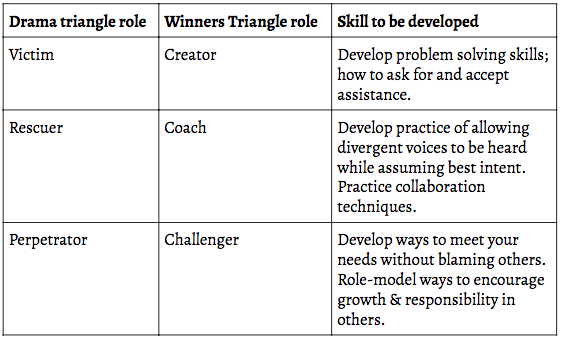
Let’s see what this change looks like:
Resources
Karpman drama triangle
What does narcissism have in common with Karpman’s drama triangle?
Escaping Conflict and the Karpman Drama Triangle. BPD Family, Borderline personality disorder website
Moral grandstanding: there’s a lot of it about, all of it bad By Justin Tosi and Brandon Warmke
Books
The Power of TED* (*The Empowerment Dynamic) by David Emerald
Articles
Narcissism, Personal Accountability, & Social Justice, Ava Pommerenk, Medium, 11/23/2018
Narcissists, Psychopaths, and Manipulators Are More Likely To Engage in ‘Virtuous Victim Signaling,‘ Says Study. Elizabeth Nolan Brown, Reason, 7/7/2020
Ok, E., Qian, Y., Strejcek, B., & Aquino, K. (2020, July 2). Signaling Virtuous Victimhood as Indicators of Dark Triad Personalities, Journal of Personality and Social Psychology, http://dx.doi.org/10.1037/pspp0000329
Lynne Forest, The Three Faces of Victim – An Overview of the Victim Triangle
Narcissistic Abuse & the Drama Triangle, excerpt from Never Again – Moving On from Narcissistic Abuse and Other Toxic Relationships, Sarah Davies, 2019, Matador
‘Why Me?’ The Role of Perceived Victimhood in American Politics. Miles T. Armaly & Adam M. Enders, Political Behavior (2021). https://doi.org/10.1007/s11109-020-09662-x
Thanks for visiting. See our articles on
Astronomy, Biology, Chemistry, Earth Science, Mathematics, Physics
Great physics discussion questions!
Great physics discussion questions! These were written by Physicist Dr. Matt Caplan, who used to run the QuarksAndCoffee blog.
That blog no longer exists, links to archived copies exist.
If everyone was Kung fu fighting, and their kicks really were fast as lightning, what would happen?
How many calories do superheroes burn using their powers?
What would happen if a 10 meter plasma sphere was transported from the Sun to Earth?
Dyson Sphere: Is there enough material in the solar system to build a shell to enclose the sun?
If it was cold enough for the atmosphere to condense, how deep would the ‘liquid air’ be?
Does my phone weigh more when the battery is charged?
How loud would a literal ‘shot heard round the world’ be?
Why are there seven colors in the rainbow?
Math
What are the odds of solving a Rubik’s cube by making random moves?
Buoyancy of balloons in Up
Up is a 2009 American computer-animated comedy-drama film produced by Pixar Animation Studios and released by Walt Disney Pictures.
In this movie, the hero releases many, many helium filled balloons out of the house. Could that actually be enough to make a house float?

In Physics and the movie UP – floating a house, 6/3/2009, Wired Magazine, Rhett Allain writes:
…The first time I saw this trailer I thought the balloons were stored in his house. After re-watching in slow motion, it seems the balloons were maybe in the back yard held down by some large tarps. … [but] what if he had the balloons in his house and then released them? Would that make the house float more? Here is a diagram:
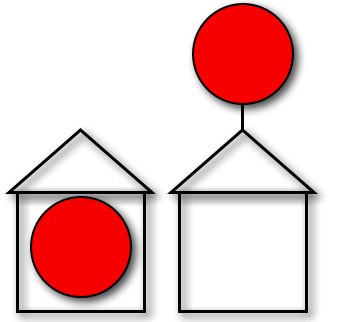
There is a buoyancy force when objects displace air or a fluid. This buoyancy force can be calculated with Archimedes’ principle which states: The buoyancy force is equal to the weight of the fluid displaced.
The easiest way to make sense of this is to think of some water floating in water. Of course water floats in water. For floating water, it’s weight has to be equal to it’s buoyant force. Now replace the floating water with a brick or something. The water outside the brick will have the exact same interactions that they did with the floating water. So the brick will have a buoyancy force equal to the weight of the water displaced. For a normal brick, this will not be enough to make it float, but there will still be a buoyant force on it.
What is being displaced? What is the mass of the object. It really is not as clear in this case. What is clear is the thing that is providing the buoyancy is the air. So, the buoyancy force is equal to the weight of the air displaced.
What is displacing air? In this case, it is mostly the house, all the stuff in the house, the balloons and the helium in the balloons.
In the two cases above, the volume of the air displaced does not change. This is because the balloons are in the air in the house. (Remember, I already said that I see that this NOT how it was shown in the movie).
So, if you (somehow) had enough balloons to make your house fly and you put them IN your house, your house would float before you let them outside.
Why doesn’t the balloon house keep rising? The reason the balloon reaches a certain height is that the buoyant force is not constant with altitude.
As the balloon rises, the density of the air decreases. This has the effect of a lower buoyant force.
At some point, the buoyant force and the weight are equal and the balloon no longer changes in altitude.
http://scienceblogs.com/dotphysics/2009/06/03/physics-and-the-movie-up-floating-a-house/
1
https://en.wikipedia.org/wiki/Larry_Walters
1
1
1
1
Mythbusters : Lets talk buoyancy – Pirates of the Carribean
Adam and Jamie explore the possibility of raising a ship with ping-pong balls, originally conceived in the 1949 Donald Duck story The Sunken Yacht by Carl Barks.
MythBusters S02E13 Pingpong Rescue, 2004
Doing the math of MythBusters – Warning: Science content
More on the movie Up! (or Upper)
Rhett Allain on June 9, 2009
If the house were lifted by standard party balloons, what would it look like? The thing with party balloons is that they are not packed tightly, there is space between them. This makes it look like it takes up much more space. Let me just use Slate’s calculation of 9.4 million party balloons….
Pixar said they used 20,600 balloons in the lift off sequence. From that and the picture I used above and the same pixel size trick, the volume of balloons is about the same as a sphere of radius 14 meters. This would make a volume of 12,000 m3…
And then this would lead to an apparent volume of the giant cluster of 9.4 million balloons:
If this were a spherical cluster, the radius would be 110 meters. Here is what that would look like:
How long would it take this guy to blow up this many balloons? You can see that there is no point stopping now. I have gone this far, why would I stop? That would be silly.
The first thing to answer this question is, how long does it take to fill one balloon. I am no expert, I will estimate low. 10 seconds seems to be WAY too quick.
But look, the guy is filling 9.4 million balloons, you might learn a few tricks to speed up the process. If that were the case, it would take 94 million seconds or 3 years….
What if it was just 20,600 balloons like Pixar used in the animation? At 10 seconds a balloon, that would be 2.3 days (and I think that is a pretty fast time for a balloon fill). Remember that MythBusters episode where they filled balloons to lift a small boy? Took a while, didn’t it?
How many tanks of helium would he need? According this site, a large helium cylinder can fill 520 of the 11″ party balloons and costs about $190. If he had to fill 9.4 million balloons, this would take (9.4 million balloons)(1 tank)/(520 balloons)= 18,000 tanks at a cost of 3.4 million dollars.
http://scienceblogs.com/dotphysics/2009/06/09/more-on-the-movie-up-or-upper/
The Big Dig
What are we learning?
We’re studying the engineering – applied physics – used in Boston’s Big Dig. We’ll study the effect of changing forces, loads, materials and shapes, on a structure.
Why are we learning this?
To learn how to break a complex real-world problem – building safe tunnels and related structures – into smaller parts that can be solved using scientific/engineering principles.
To learn how to use a simple computer simulation to model such systems.
Vocabulary goals
compression, tension, bending, shear, torsion, loads, dead load, live load, settlement load, thermal load, wind load, earthquake load, dynamic load, arch, brace, buttress
Historical background
The Central Artery/Tunnel Project (CA/T) – the Big Dig – was a megaproject in Boston that rerouted the Central Artery of Interstate 93, the chief highway through the heart of the city, into the 3.5-mile (5.6 km) Thomas P. O’Neill Jr. Tunnel. It also included the construction of the Ted Williams Tunnel (extending Interstate 90 to Logan International Airport), the Zakim Bunker Hill Memorial Bridge over the Charles River, and the Rose Kennedy Greenway in the space vacated by the previous I-93 elevated roadway. Planning began in 1982; construction work was carried out between 1991 and 2006.
-
Intro adapted from Wikipedia, The Big Dig, 1/18
Photo gallery
Here are before-and-after photos of downtown Boston, showing the removal of the Central Artery and it’s replacement with the Rose Kennedy Greenway.
Left-click on it to open in a new window, at higher-resolution.

Our app Building Big: Forces & Engineering app (from PBS)
Use the worksheet assigned by the teacher.
Building the tunnel under Forth Point Channel
William Harris, in “How Tunnels Work: The Big Dig” (How Stuff Works) writes:
A few miles west, Interstate 90 enters another tunnel that carries the highway below South Boston. Just before the I-90/I-93 interchange, the tunnel encounters the Fort Point Channel, a 400-foot-wide body of water that provided some of the biggest challenges of the Big Dig.
Engineers couldn’t use the same steel-tube approach they employed on the Ted Williams Tunnel because there wasn’t enough room to float the long steel sections under bridges… Eventually, they decided to abandon the steel-tube concept altogether and go with concrete tunnel sections, the first use of this technique in the United States.
…workers first built an enormous dry dock on the South Boston side of the channel. Known as the casting basin, the dry dock measured 1,000 feet long, 300 feet wide and 60 feet deep — big enough to construct the six concrete sections that would make up the tunnel…
The completed sections were sealed watertight at either end. Then workers flooded the basin so they could float out the sections and position them over a trench dredged on the bottom of the channel.
[They couldn’t] simply lower concrete sections into the trench [because] of the MBTA’s Red Line subway tunnel, which runs just under the trench. The weight of the massive concrete sections would damage the older subway tunnel if nothing were done to protect it. So engineers decided to prop up the tunnel sections using 110 columns sunk into the bedrock. The columns distribute the weight of the tunnel and protect the Red Line subway, which continues to carry 1,000 passengers a day.

Apps
Slider photo: Boston before- and after- Big Dig (10 years later, did the Big Dig deliver?, Boston Globe)
Documentaries
Extreme Engineering: Boston’s Big Dig (2003)
https://vimeo.com/30626123
Tour of the Big Dig in Boston, Bob Vila
National Geographic MegaStructures Boston Big Dig Documentary 2016
https://www.youtube.com/watch?v=R2HHmWxGRMQ
Big Dig The Construction Story of Boston Big Dig
Underground Utility Protection
In “The Big Dig: Learning from a Mega Project”, Virginia Greiman writes
To protect against losses caused by the disruption and failure of underground utilities, a Big Dig utility program relocated 29 miles of gas, electric, telephone, sewer, water, and other utility lines maintained by thirty-one separate companies in 1996.
Some of this infrastructure was more than 150 years old; a complete lack of knowledge on the age, condition, and location of most of the utilities required submission of “as-built” drawings by all project contractors—drawings of existing conditions rather than planned or proposed construction.
The project had to deal with utilities that were shown on as-built drawings but never installed, and damage and flooding caused by underground sewer pipes not identified on the drawings.
Resources
Wikipedia.org: Big Dig
PBS: Great Projects – The Building of America
Archaeology of the Central Artery Project: Highway to the Past. Website + 58 page PDF book.
Big Dig: Massachusetts Historical Commission, Archaeological Exhibits Online
Learning Standards
2016 Massachusetts Curriculum Framework High School Technology/Engineering
HS-ETS1-1. Analyze a major global challenge to specify a design problem that can be improved. Determine necessary qualitative and quantitative criteria and constraints for solutions, including any requirements set by society.
HS-ETS1-2. Break a complex real-world problem into smaller, more manageable problems that each can be solved using scientific and engineering principles.
HS-ETS1-3. Evaluate a solution to a complex real-world problem based on prioritized criteria and trade-offs that account for a range of constraints, including cost, safety, reliability, aesthetics, and maintenance, as well as social, cultural, and environmental impacts.
HS-ETS1-4. Use a computer simulation to model the impact of a proposed solution to a complex real-world problem that has numerous criteria and constraints on the interactions within and between systems relevant to the problem.
HS-ETS1-5(MA). Plan a prototype or design solution using orthographic projections and isometric drawings, using proper scales and proportions.
HS-ETS1-6(MA). Document and present solutions that include specifications, performance results, successes and remaining issues, and limitations.
Teaching physics with sci-fi films
It’s amazing how motivated students can be to do real, quantitative physics, with the right set-up 🙂
- Feature Films
- Video Clips
- Video Games

